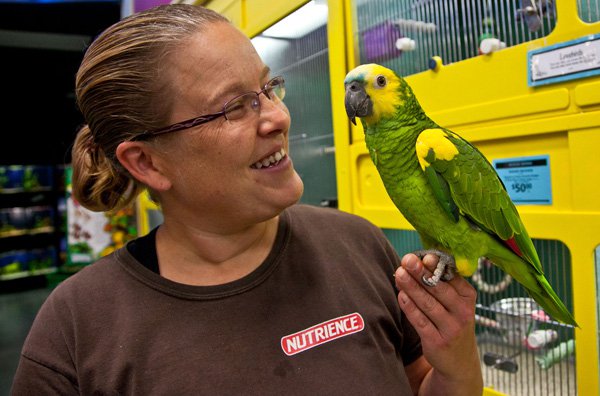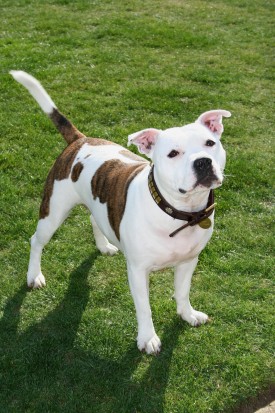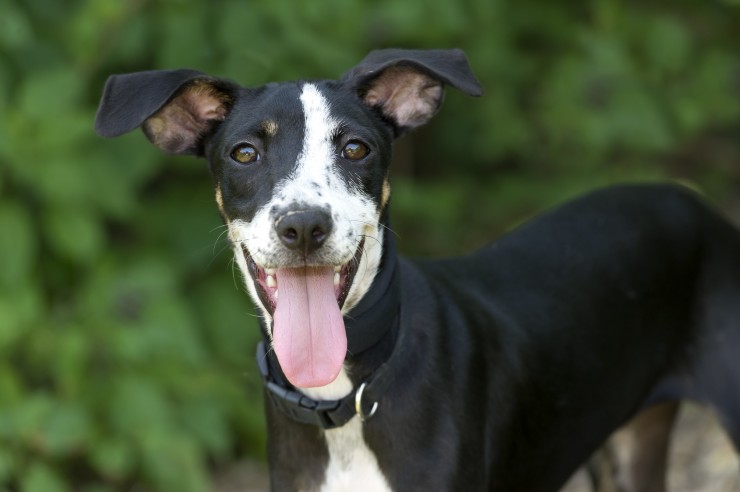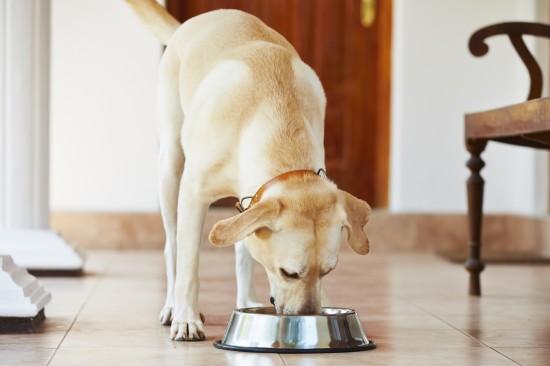
Training your dog boils down to one concept—associating pleasure with good behaviour. By that, I mean rewards and positive response from you quickly trains a dog to behave in the desired way in order to win those rewards and positive reactions.
This dog training concept extends to dogs which, for whatever reason, react in fear to relatively benign incidents, such as loud noises, power tools, appliances, etc. The idea is to create an association in their minds between something pleasurable or exciting and whatever it is that’s causing them to react in fear.
If your dog has any irrational fears, or fears stemming from a scary experience, you need to address this immediately to avoid a dog who perpetually feels stressed. A well-trained dog is a happy, calm dog.
Say, for example, your dog is afraid to ride in the car. This is particularly the case when owners only take their dogs in the car when it’s time to go to the vet. The first step is to encourage and reward your dog for sitting calmly next to the car. Get him accustomed to the idea of being near the car without having to actually get inside.
Once he can approach the car without being frightened, sit with him on the back seat of the car. (If he sits in the boot, climb in beside him.) Take a favourite toy and be sure to have lots of treats handy. Take a book or magazine to read and just relax, rewarding him for sitting calmly. You want to do this dog obedience training exercise a number of times to reinforce the idea that there’s nothing to be frightened of.
The next stage is to start the car and let it idle. Reassure him with lots of petting and stroking, again, rewarding him when he sits calmly. Once you can progress to travelling, be sure to take him only on rides to a local park or someplace where the destination is fun for him. The idea is to train him that the car is associated with fun and pleasure.
The same dog training can be applied to fears stemming, for example, from loud noises. This is easier if you have a partner. Your partner recreates the noise, not too loudly and ideally in another room to start. Make sure you have plenty of tantalizing treats, such as bite-sized pieces of cheese. Let him smell one before you start to be sure you have his attention. When your partner makes the noise, the treat should be in your hand. Give him the treat at the same moment he hears the noise.
When the dog’s ready, have your partner move closer until ultimately the noise occurs right next to him. Eventually, you will train your dog to ignore the noise completely because it has now been associated with something positive and pleasurable. He’ll have put those fears and stress behind him forever.
In this case it is okay to use treats because you are specifically trying to change a strong behaviour. Also by only using treats in certain areas of training there effect is stronger than if you use treats all the time.
 The Science Behind Why Cats Land on their Feet
The Science Behind Why Cats Land on their Feet
The Science Behind Why Cats Land on their Feet
The Science Behind Why Cats Land on their Feet
 Five Of The Most Commonly Misunderstood Dog Breeds
Five Of The Most
Five Of The Most Commonly Misunderstood Dog Breeds
Five Of The Most
 National Pet Month’s Top Ten Tips For Responsible Pet Ownership Explained
National Pet Mont
National Pet Month’s Top Ten Tips For Responsible Pet Ownership Explained
National Pet Mont
 Caring For Lined Seahorses (hippocampus Erectus)
Caring For Lined
Caring For Lined Seahorses (hippocampus Erectus)
Caring For Lined
 How To Help A Skinny Dog Gain Weight
How To Help A Ski
How To Help A Skinny Dog Gain Weight
How To Help A Ski
Copyright © 2005-2016 Pet Information All Rights Reserved
Contact us: www162date@outlook.com